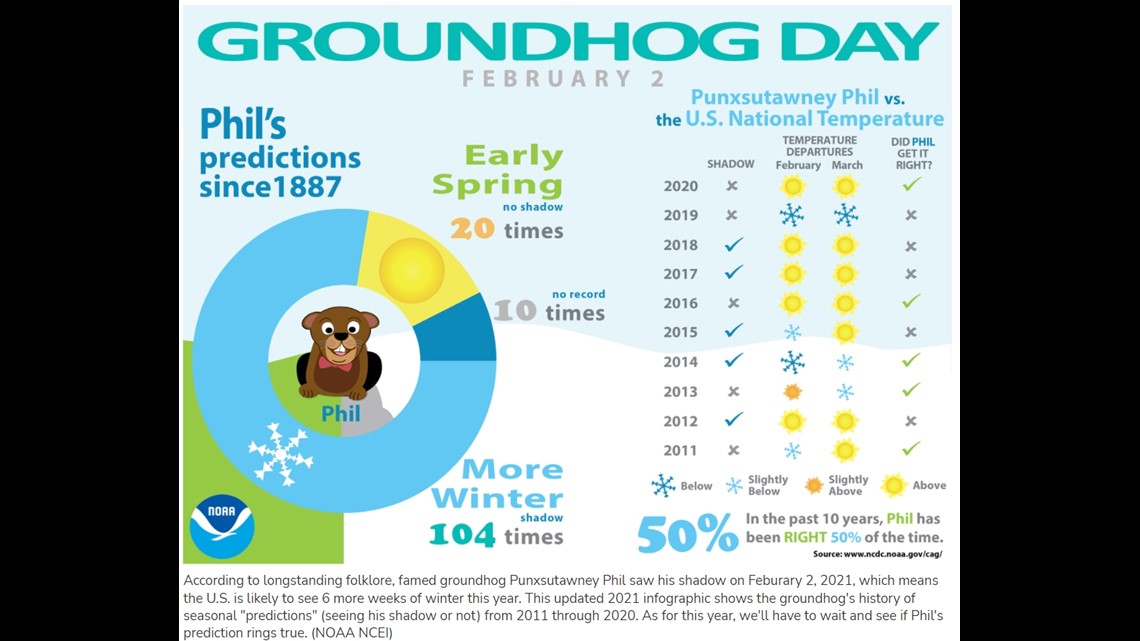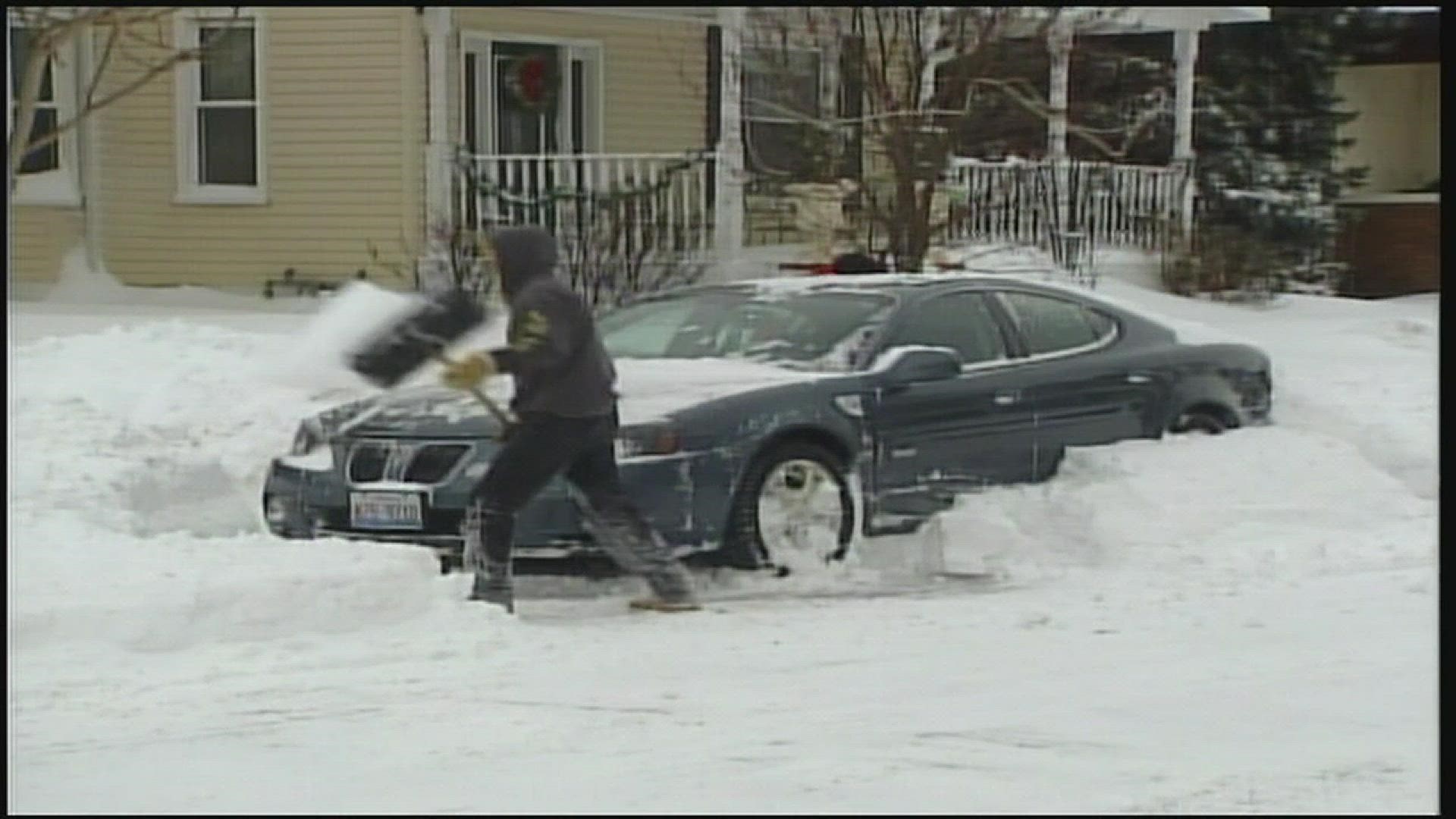MOLINE, Ill. — Editor's Note: The video shown above is from a 2011 WQAD newscast.
Today marks the 135th annual Groundhog Day. The tradition first occurred on Feb. 2, 1887, at Gobbler’s Knob in Punxsutawney, Pennsylvania.
The groundhog, Phil, comes out of the hole, and if he sees his shadow, we will have six more weeks of winter. If there is no shadow, we will have an early spring.
The tradition of Groundhog Day was started by Germans, who got the idea from Christian Candlemas. Clergy would bless and distribute candles needed for winter, the candles represented how long and cold the winter would be.
The Germans piggy-backed off this idea by predicting how long and cold the winter would be, but instead of using candles, they used an animal - specifically a hedgehog - to predict the weather.
Once Germans came to America, they settled in Pennsylvania, where there were not many hedgehogs but a lot of groundhogs, so they switched animals to predict the winter. The reason that it is now called Groundhog Day is due the famous 1993 movie "Groundhog Day" starring Bill Murray.
Groundhogs hibernate in the fall because they cannot handle the cold. In February, they do emerge from their burrows, but male groundhogs emerge from their burrows to find a mate, not to predict a longer or shorter winter. Then finally in March they emerge for the warmer weather.
Phil, who was named by the Punxsutawney Groundhog Club, is not the only groundhog anymore, but he is the most famous and most watched. There are other groundhogs such as Birmingham Bill, Staten Island Chuck and Shubenacadie Sam in Canada.
Accuracy of Groundhog Day
Since 1887, Phil has not seen his shadow 20 times which predicts an early spring. He has seen his shadow 104 times, predicting six more weeks of winter.
There is a 10-year gap where there is no record with tomorrow's prediction marking the 135th time Phil comes out.
Phil’s accuracy over the last 134 years is 39%, but when you compare his predictions back to 1969, when weather records become more accurate and people stopped questioning them, he is only right 36% of the time.
Tim Roche, a meteorologist at Weather Underground, told Live Science that when Phil predicts a shorter winter, he is more likely to be right. Out of the 15 times that he didn’t see his shadow, he was right seven times, giving him 47% accuracy.
Roche also states Phil accuracy is much worse than a climatological prediction, and you're better off flipping a coin than going by the groundhog’s prediction.
Although Phil is very unsuccessful in predicting a longer winter or an earlier spring, it is a fun tradition to watch him come out of burrow and see if there is a shadow or not.



